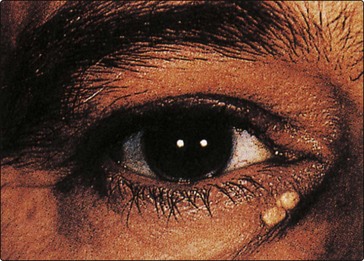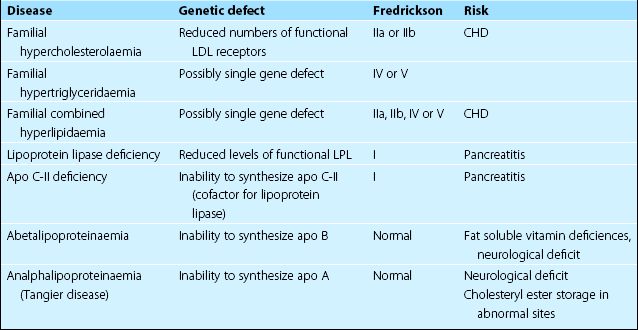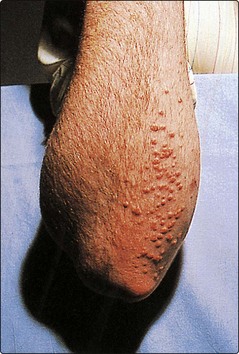67 Currently there is no satisfactory comprehensive classification of lipoprotein disorders. Genetic classifications have been attempted but are becoming increasingly complex as different mutations are discovered (Table 67.1). Familial hypercholesterolaemia (FH), which may present with xanthelasma (Fig 67.1), tendon xanthomas, severe hypercholesterolaemia and premature coronary heart disease, may be due to any of over 500 different mutations of the LDL receptor gene. Mutations of the apolipoprotein (apo) B gene can give an identical syndrome. Familial hyperchylomicronaemia, which presents with recurrent abdominal pain and pancreatitis, may result from genetic mutations of the lipoprotein lipase or apo C-II genes. Eruptive xanthomas (Fig 67.2) are characteristic of hypertriglyceridaemia. Fig 67.1 Xanthelasmas in younger individuals (age <40 years) usually indicate hypercholesterolaemia. In the elderly they do not carry the same significance.
Clinical disorders of lipid metabolism
Classification

Clinical disorders of lipid metabolism










